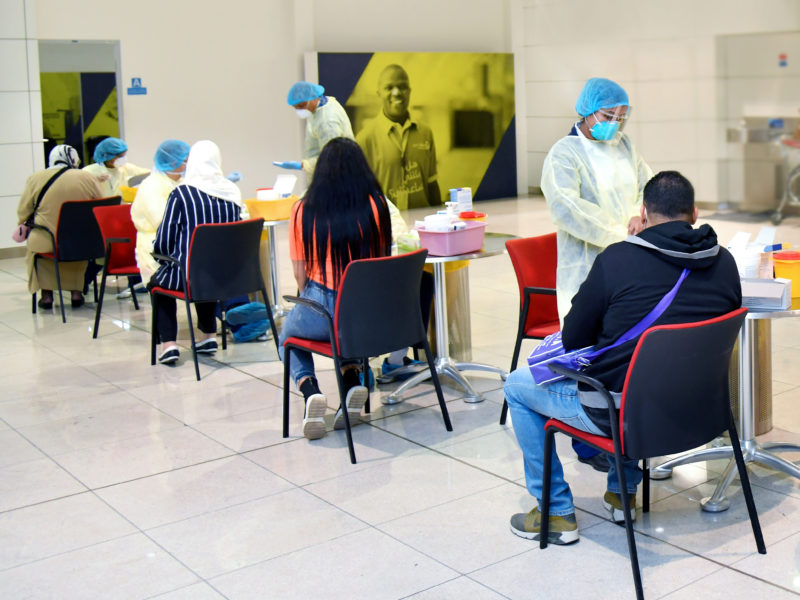Global harmonisation is the key to a successful restart and sustained recovery. Countries should step up co-ordinated openings of travel routes and health protocols. The United Arab Emirates (except Abu Dhabi) is open for business; as passengers board aircraft destined for these shores the aviation industry is still reeling from the devastating effects of the pandemic, causing widespread uncertainty. Full-year traffic is expected to drop 56 per cent in the Middle East in 2020, according to the International Air Transport Association (IATA), leaving the Middle East ‘super connectors’ like Emirates, Etihad Airways and Qatar Airways having to deal with an increasing level of complexity in their networks. Many governments across the globe are still struggling to develop robust COVID-19 strategies to kickstart long-haul travel.
Though frequent policy changes on testing requirements and quarantines leads to greater uncertainty for airlines, airports and passengers, based on my personal business travel experiences to the UAE multiple times during the pandemic, the nation’s coordinated approach to restarting air travel is an excellent example for other governments to follow.
Protocol-Bound
Passengers visiting the UAE must meet clear requirements; ranging from presenting pre-departure COVID-19 test certificates to testing on arrival and self-quarantine protocols, subject to release of test results within 12 hours. For departures out of any airport in the UAE, a COVID-19 test certificate is also required.
The multilateral approach and close collaboration between all stakeholders in the United Arab Emirates, and their unwavering commitment to the aviation industry, is the key to success during these critical times.
Governments must align risk-based and practical measures to allow the aviation industry to restart in a coordinated manner; all the while reassuring travellers, particularly business passengers. Aviation must avoid losing a large share of business travel to technology (e.g. videoconferencing) in the short- and medium-term.
Aiming For Rebound
Dubai for instance has quickly recognised this threat, reopening its borders to the majority of countries, including the US, when it was safe to do so; this has put the nation in prime position to once again attract foreign businesses, to support its economic diversification strategies. The International Civil Aviation Organization (ICAO) should develop a dedicated framework with recommendations for governments and industry stakeholders based on safety or risk assessments, guided by scientific health experts.
These essential measures should only apply to passengers travelling between countries where there is a significant risk of contracting COVID-19, for as long as necessary to ensure both public health and passenger confidence during and after the pandemic.
Ditch The Do It Alone
In order to kickstart air travel in a coordinated manner, we need to follow a multilateral approach. Unilateral national measures (e.g. blanket quarantine rules in Australia, China, Israel, United Kingdom and New Zealand) can be damaging to the international travel industry and passenger confidence at the end of the day.
Unnecessary quarantine measures harm passenger confidence, especially business travellers. Boosting confidence to fly requires harmonised measures and a risk-based approach relying on scientific evidence. Such a step will help the entire industry restore air travel confidence, ultimately supporting the recovery.

Governments should apply various measures for the recovery of the aviation industry and the economy. Blanket quarantines should be avoided and replaced with effective testing protocols, throughout the customer journey to mitigate risk.
Certified issued health certificates should be recognised by all countries; however they need to provide support in securing solutions to share health information such as test results, while respecting data privacy laws. The irrefutable proof of a passenger’s COVID-19 status could be directly linked to the passenger’s e-ticket.
Integrating COVID-19 testing into the airport journey, for example at check-in, would help reassure passengers at a time when health and safety are a primary concern. By focusing on medium-high risk countries or cities (with mutual acceptance of results) it could make travel more seamless for some.
For passengers arriving from high risk countries or cities, a combination of COVID-19 testing and a short quarantine, until the verification of their results, should be required. We have witnessed that fear and trust are at the forefront of people’s minds when planning a trip at the moment, especially by plane in the near future.
Keep The Info Coming
Therefore, regular communication from the airlines and airports to the public, in close cooperation with stakeholders, is essential for the mutual protection of travellers and staff in these uncertain times.
Through the establishment of air bridges/air travel corridors between safe countries (e.g. ultra long-haul flights between United Kingdom – Australia via Perth) the removal of the need for quarantine when travelling should be at the top of everyone’s agenda. By establishing the bridge model, and extending protection beyond the air bridge to destination services, we could bring back the ‘old normal’ at the end of the day (inside green zones) and millions of direct and indirect jobs worldwide could be saved by restoring the global economy over a prolonged period.
Conclusion
Undoubtedly, the entire aviation industry can recover from this pandemic. It will take a combination of vision, creativity, compromise, commitment, discipline, operational acumen and leadership – combined with continuous precautions.
How can the aviation industry transform itself better to recover faster from the ongoing crisis? Share your thoughts below!




